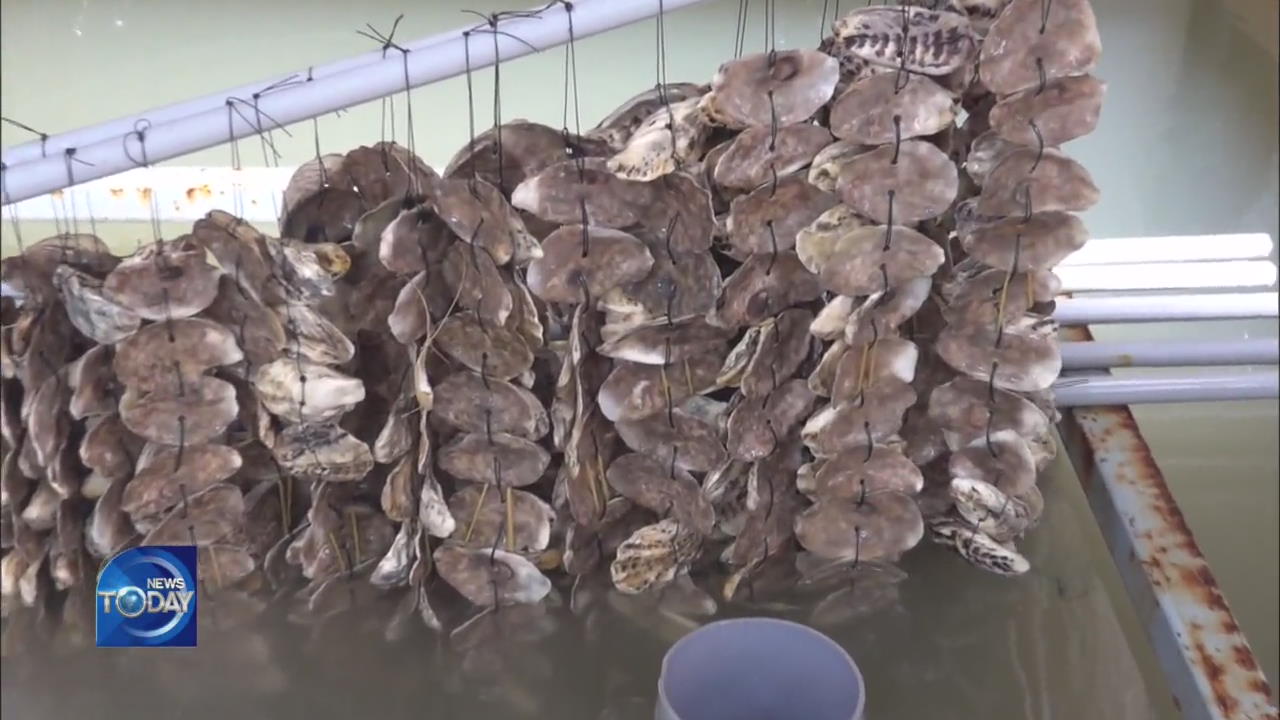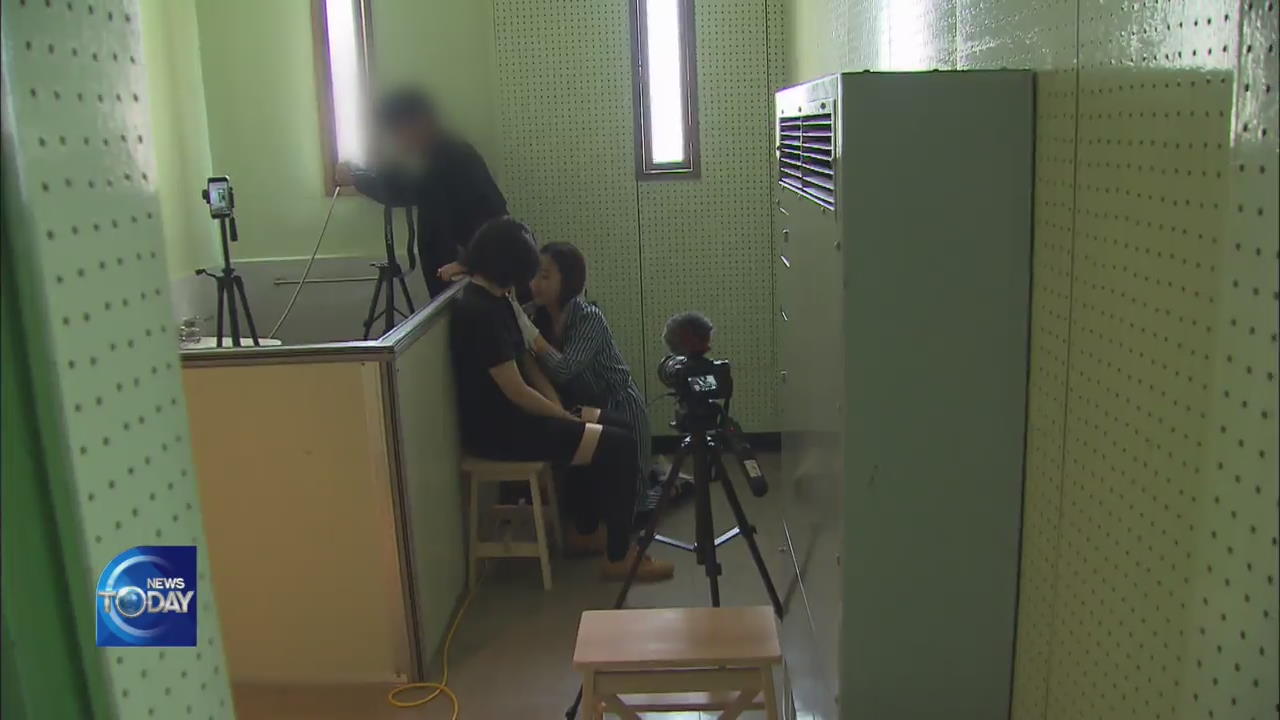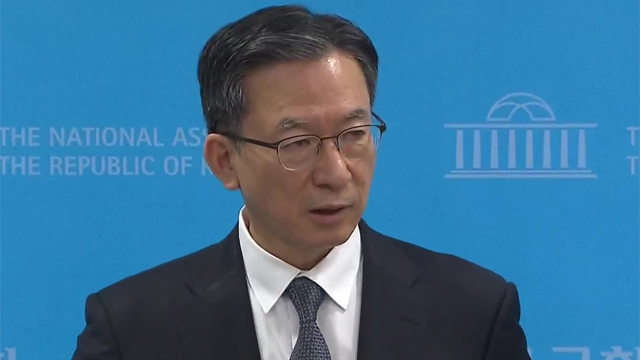NEW BREEDING METHOD OF SEAWEED LAVER
입력 2019.10.10 (15:05)
수정 2019.10.10 (16:49)
읽어주기 기능은 크롬기반의
브라우저에서만 사용하실 수 있습니다.
[Anchor Lead]
The cultivation of laver seaweed largely depends on weather conditions and can be seriously affected by typhoons. To raise the chances of successful seaweed farming, some regions have been using the land seeding method over the past ten years. to cultivate laver spores. But only few laver farms have adopted this method so far. Here's more.
[Pkg]
A laver farm in Haenam... Prior to farming, farmers first place oyster shells containing laver spores onto cultivation nets. The nets are stacked in five to ten layers before they are covered in plastic sheets and moved to the sea. When the water temperature reaches 22 to 23 degrees Celsius, laver spores begin to be released. Once that process begins, the nets are spread one by one.
[Soundbite] LEE CHANG-RYEOL(LOCAL RESIDENT) : "We have been using this plastic sheet method to cultivate seeds since my grandfather's generation. It is still in use."
A large wheel measuring six meters in diameter spins indoors, with oyster shells strewn with laver spores placed in front of it. When the light conditions and water temperature are right, the spores become released and stick to the nets. This is the land seeding method. It offers multiple advantages compared to the sea seeding method. Farmers can attach the spores with higher accuracy by counting them through a microscope. Moreover, they don't need to worry about weather conditions such as typhoons. The land seeding method is also less labor-intensive.
[Soundbite] KIM DONG-SOO(LAVER FARMER) : "The land seeding method is not affected by weather conditions. It allows us to cultivate seeds anytime."
Jeollanam-do Province introduced the land seeding method for laver farming about ten years ago. But it has yet to gain popularity among laver farmers, many of whom still prefer the old sea method. About 90 percent of laver seeding is now over in Jeollanam-do Province. However, only 20 percent of some 530,000 spore nets were installed using the land seeding method.
[Soundbite] LEE YOUNG-JIN(OFFICIAL, JEOLLANAM-DO PROV. GOVERNMENT) : "Unlike the sea method, the land seeding method allows for more even seeding. It has many advantages. We should promote it further from now on."
Cultivating laver spores using the land seeding method has emerged as a viable solution amid frequent typhoons and the rising seawater temperature, which seriously affect the success rate of laver cultivation.
The cultivation of laver seaweed largely depends on weather conditions and can be seriously affected by typhoons. To raise the chances of successful seaweed farming, some regions have been using the land seeding method over the past ten years. to cultivate laver spores. But only few laver farms have adopted this method so far. Here's more.
[Pkg]
A laver farm in Haenam... Prior to farming, farmers first place oyster shells containing laver spores onto cultivation nets. The nets are stacked in five to ten layers before they are covered in plastic sheets and moved to the sea. When the water temperature reaches 22 to 23 degrees Celsius, laver spores begin to be released. Once that process begins, the nets are spread one by one.
[Soundbite] LEE CHANG-RYEOL(LOCAL RESIDENT) : "We have been using this plastic sheet method to cultivate seeds since my grandfather's generation. It is still in use."
A large wheel measuring six meters in diameter spins indoors, with oyster shells strewn with laver spores placed in front of it. When the light conditions and water temperature are right, the spores become released and stick to the nets. This is the land seeding method. It offers multiple advantages compared to the sea seeding method. Farmers can attach the spores with higher accuracy by counting them through a microscope. Moreover, they don't need to worry about weather conditions such as typhoons. The land seeding method is also less labor-intensive.
[Soundbite] KIM DONG-SOO(LAVER FARMER) : "The land seeding method is not affected by weather conditions. It allows us to cultivate seeds anytime."
Jeollanam-do Province introduced the land seeding method for laver farming about ten years ago. But it has yet to gain popularity among laver farmers, many of whom still prefer the old sea method. About 90 percent of laver seeding is now over in Jeollanam-do Province. However, only 20 percent of some 530,000 spore nets were installed using the land seeding method.
[Soundbite] LEE YOUNG-JIN(OFFICIAL, JEOLLANAM-DO PROV. GOVERNMENT) : "Unlike the sea method, the land seeding method allows for more even seeding. It has many advantages. We should promote it further from now on."
Cultivating laver spores using the land seeding method has emerged as a viable solution amid frequent typhoons and the rising seawater temperature, which seriously affect the success rate of laver cultivation.
■ 제보하기
▷ 카카오톡 : 'KBS제보' 검색, 채널 추가
▷ 전화 : 02-781-1234, 4444
▷ 이메일 : kbs1234@kbs.co.kr
▷ 유튜브, 네이버, 카카오에서도 KBS뉴스를 구독해주세요!
- NEW BREEDING METHOD OF SEAWEED LAVER
-
- 입력 2019-10-10 15:06:38
- 수정2019-10-10 16:49:53

[Anchor Lead]
The cultivation of laver seaweed largely depends on weather conditions and can be seriously affected by typhoons. To raise the chances of successful seaweed farming, some regions have been using the land seeding method over the past ten years. to cultivate laver spores. But only few laver farms have adopted this method so far. Here's more.
[Pkg]
A laver farm in Haenam... Prior to farming, farmers first place oyster shells containing laver spores onto cultivation nets. The nets are stacked in five to ten layers before they are covered in plastic sheets and moved to the sea. When the water temperature reaches 22 to 23 degrees Celsius, laver spores begin to be released. Once that process begins, the nets are spread one by one.
[Soundbite] LEE CHANG-RYEOL(LOCAL RESIDENT) : "We have been using this plastic sheet method to cultivate seeds since my grandfather's generation. It is still in use."
A large wheel measuring six meters in diameter spins indoors, with oyster shells strewn with laver spores placed in front of it. When the light conditions and water temperature are right, the spores become released and stick to the nets. This is the land seeding method. It offers multiple advantages compared to the sea seeding method. Farmers can attach the spores with higher accuracy by counting them through a microscope. Moreover, they don't need to worry about weather conditions such as typhoons. The land seeding method is also less labor-intensive.
[Soundbite] KIM DONG-SOO(LAVER FARMER) : "The land seeding method is not affected by weather conditions. It allows us to cultivate seeds anytime."
Jeollanam-do Province introduced the land seeding method for laver farming about ten years ago. But it has yet to gain popularity among laver farmers, many of whom still prefer the old sea method. About 90 percent of laver seeding is now over in Jeollanam-do Province. However, only 20 percent of some 530,000 spore nets were installed using the land seeding method.
[Soundbite] LEE YOUNG-JIN(OFFICIAL, JEOLLANAM-DO PROV. GOVERNMENT) : "Unlike the sea method, the land seeding method allows for more even seeding. It has many advantages. We should promote it further from now on."
Cultivating laver spores using the land seeding method has emerged as a viable solution amid frequent typhoons and the rising seawater temperature, which seriously affect the success rate of laver cultivation.
The cultivation of laver seaweed largely depends on weather conditions and can be seriously affected by typhoons. To raise the chances of successful seaweed farming, some regions have been using the land seeding method over the past ten years. to cultivate laver spores. But only few laver farms have adopted this method so far. Here's more.
[Pkg]
A laver farm in Haenam... Prior to farming, farmers first place oyster shells containing laver spores onto cultivation nets. The nets are stacked in five to ten layers before they are covered in plastic sheets and moved to the sea. When the water temperature reaches 22 to 23 degrees Celsius, laver spores begin to be released. Once that process begins, the nets are spread one by one.
[Soundbite] LEE CHANG-RYEOL(LOCAL RESIDENT) : "We have been using this plastic sheet method to cultivate seeds since my grandfather's generation. It is still in use."
A large wheel measuring six meters in diameter spins indoors, with oyster shells strewn with laver spores placed in front of it. When the light conditions and water temperature are right, the spores become released and stick to the nets. This is the land seeding method. It offers multiple advantages compared to the sea seeding method. Farmers can attach the spores with higher accuracy by counting them through a microscope. Moreover, they don't need to worry about weather conditions such as typhoons. The land seeding method is also less labor-intensive.
[Soundbite] KIM DONG-SOO(LAVER FARMER) : "The land seeding method is not affected by weather conditions. It allows us to cultivate seeds anytime."
Jeollanam-do Province introduced the land seeding method for laver farming about ten years ago. But it has yet to gain popularity among laver farmers, many of whom still prefer the old sea method. About 90 percent of laver seeding is now over in Jeollanam-do Province. However, only 20 percent of some 530,000 spore nets were installed using the land seeding method.
[Soundbite] LEE YOUNG-JIN(OFFICIAL, JEOLLANAM-DO PROV. GOVERNMENT) : "Unlike the sea method, the land seeding method allows for more even seeding. It has many advantages. We should promote it further from now on."
Cultivating laver spores using the land seeding method has emerged as a viable solution amid frequent typhoons and the rising seawater temperature, which seriously affect the success rate of laver cultivation.
이 기사가 좋으셨다면
-
좋아요
0
-
응원해요
0
-
후속 원해요
0

















이 기사에 대한 의견을 남겨주세요.